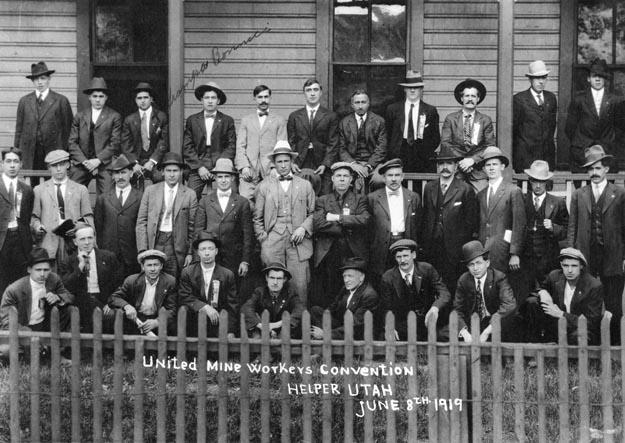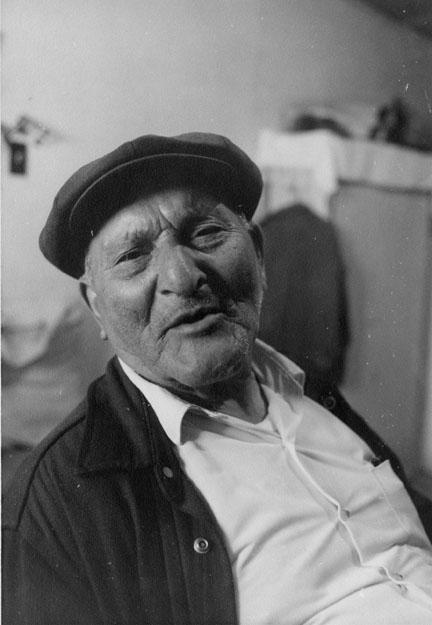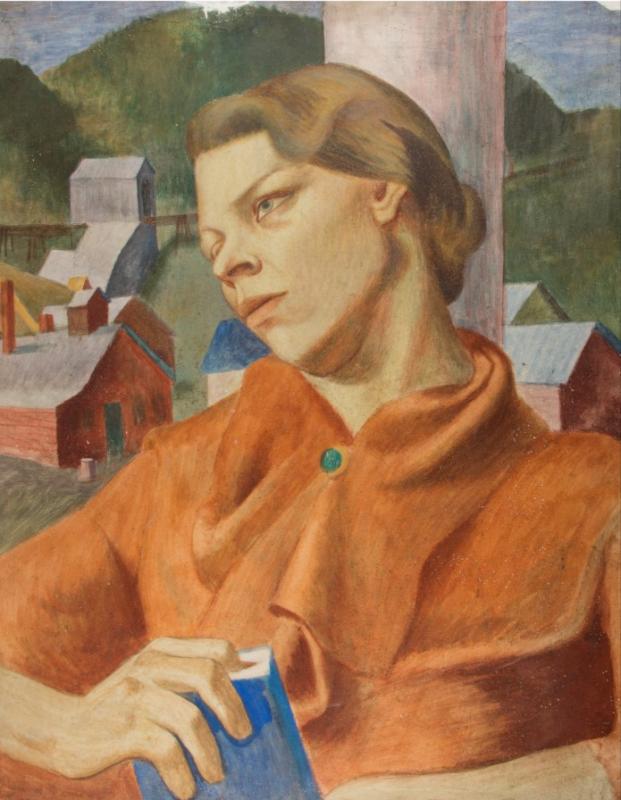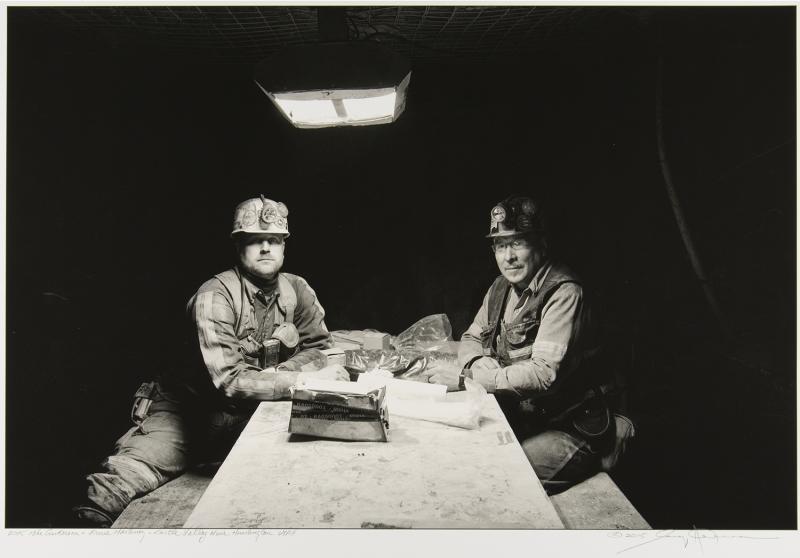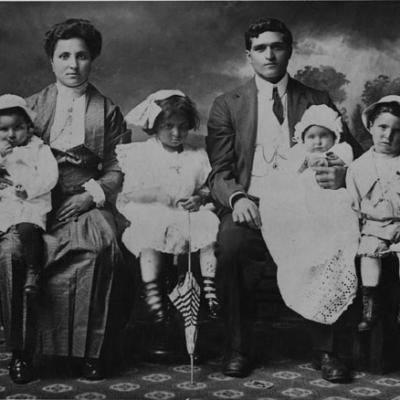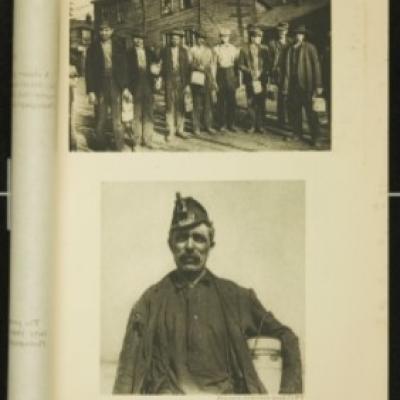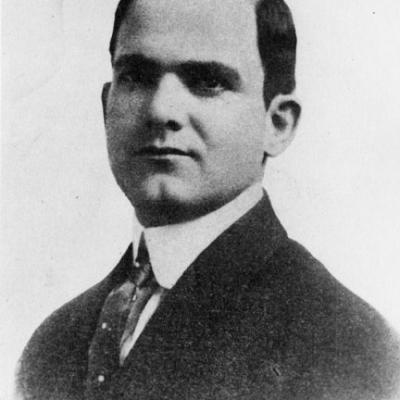Industry Economic Human Landscape
Labor
In Special Collections
At the Utah Museum of Fine Arts
Related Resources
In Special Collections
Opportunities for wealth trumpeted by industry attracted the extensive labor force required to extract, transport, and process ore. Many workers lived in "company towns," such as Castle Gate and Copperton, in which all stores and housing were owned by mine operators. Laborers could be paid in scrip (company credit) rather than cash. The scrip could only be spent at company stores and businesses, adding to the stronghold mine operators held over the labor force. Throughout the early 1900s, there were major strikes, often violent, as mine workers demanded union recognition, the right to use any store, 8 hour work days, safer worker conditions, and better wages that reflected the extremely hazardous, and physically demanding, nature of the job.
Fig. 1. The 1914 Ludlow Massacre was perpetrated by the Colorado National Guard with private soldiers hired by the Colorado Fuel & Iron Company. They attacked a tent colony of striking mine workers and their families. 21 people were killed, at least half of those were children.
Fig. 2. During the 1922 strike of coal mines in Carbon County, Utah, attorney Samuel King represented the United Mine Workers union. King defended more than twenty strikers accused of the murder of a sheriff during a skirmish between strikers, mine guards, and local police. This pamphlet was produced by the Union Coal Miners of Utah regarding the strike and was found in King's papers.
Fig. 3. The Leventis Brothers owned the Acropolis Coffeehouse in Bingham, Utah. John Leventis led Cretan immigrants in the violent 1912 Bingham Strike against the Utah Copper Company. The strike did not result in most of the laborer's demands being met. However, it did result in the resignation of Leonidas Skliris, a labor agent who brought in laborers from Greece and in return demanded a portion of their earnings, from Utah Copper, to the immense relief of Greek strikers.
At the Utah Museum of Fine Arts
James Brooks, Mary, Mural Study, ca. 1932. UMFA2016.4.3.
Today, artist James Brooks (1906-1992) is best-known for his lively abstract canvases, but like his friend Jackson Pollock, Brooks painted Social Realist scenes like this one prior to World War II. Rising to popularity during the devastating economic depression of the 1930s, this painting style elevated blue collar laborers, agrarian workers, and ordinary citizens into heroic figures in distinctly American settings.
Shown here is Mary MacDonald, Brooks’ first wife. Her figure looms large before the conveyor trestle, smelter, and buildings typical of the smaller western mining towns the artist visited in the early 1930s. Historically, the mining industry has been male-dominated, but this picture reminds us that the economic success of extractive ventures went beyond those working directly in and for the mines. Women contributed to the wealth of mining communities, providing often-unrecognized labor, whether within the domestic sphere or running ancillary businesses that were essential to the daily life of company towns.
Profile of Bingham Canyon Miners analyzes immigrant communities working at the Utah Copper Company.
Digging into Utah’s Mining History: Archiving the Kennecott Copper Corporation Records describes the records of Kennecott Mining, housed in Special Collections, the firsthand historical resources that document the company's labor force. (Betsey Welland)
The Copper Kings: Arizona, Utah, and Montana highlights gritty depictions of mine laborers in Western art. (Betsy Fahlman)
Creating Graphic Histories
Creating Graphic Histories Special Collections Resources
Creating Graphic Histories 6 Frame Storyboard
Lesson Plan, 7th Grade
Reilly Jensen
Students will compare and contrast primary references (in support of UT Standard 2.2 and 2.3; U.S. 1 Strand 6.2; 6.3--such as personal journal accounts of Immigrants and Settlers in Utah Territory; popular songs about their journeys; historic and contemporary photo records, etc.) to assemble a narrative from a chosen perspective (i.e. from the perspective of an individual). After studying examples of comics that relate historical events (such as the Buffalo Soldiers Comic from Sema Hadithi), and studying visual narrative and comic-book fundamentals, students will create an original narrative (using historic resources to inform the narrative) and draw their own comics that relay the perspective and story of a person or a group of people in history (UT CREATE Standard 7-8.E.CR.2; 3; 4; 5; 6).

